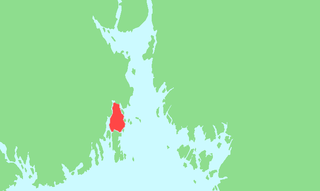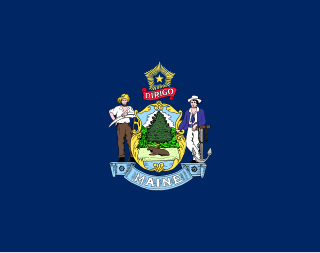| Private ownership | |
| Industry | Defence industry |
| Founded | 1980 |
| Headquarters | Nøtterøy, Norway |
Area served | Global |
Key people | - Armin Papperger(Chairman) - Jon Asbjørn Bø (President and CEO) - Harald Lunde (EVP) - Tor Ivar Kolpus (CFO) - Lars H. Henriksen (EVP) |
| Revenue | NOK 623.9 million (2009) |
Number of employees | 210 (2009) |
| Parent | Rheinmetall AG |
| Subsidiaries | Vinghøg AS Vingtech Corp Nordic Defence Supply AS Servo Kontroll AS Vingtech Saab AS Vingtech Australia Pty Ltd |
| Website | www.simrad-optronics.no |
Simrad Optronics AS is the holding company of Simrad Optronics Group located in Nøtterøy, Norway. Simrad Optronics Group is a global niche supplier to the defence industry, with production facilities in Norway and Maine, United States. Daughter companies include Vinghøg AS at Nøtterøy, Norway and Vingtech Corporation in Maine, United States. The company was listed on Oslo Stock Exchange until July 2010. As of July 12, 2010 Rheinmetall AG is the company's sole shareholder; following a voluntary offer of May 12 to acquire all issued and outstanding shares in the company. [1]

Nøtterøy is an island in Færder and a former municipality in Vestfold county, Norway. The administrative centre of the municipality was the village of Borgheim. The parish of Nøtterø was established as a municipality on 1 January 1838. Two islands were later transferred from the municipality of Stokke to Nøtterøy: Håøya and Veierland .

Maine is a state in the New England region of the northeastern United States. Maine is the 12th smallest by area, the 9th least populous, and the 38th most densely populated of the 50 U.S. states. It is bordered by New Hampshire to the west, the Atlantic Ocean to the southeast, and the Canadian provinces of New Brunswick and Quebec to the northeast and northwest respectively. Maine is the easternmost state in the contiguous United States, and the northernmost state east of the Great Lakes. It is known for its jagged, rocky coastline; low, rolling mountains; heavily forested interior; and picturesque waterways, as well as its seafood cuisine, especially lobster and clams. There is a humid continental climate throughout most of the state, including in coastal areas such as its most populous city of Portland. The capital is Augusta.
The company supplies products in four main product areas:
- Remote Weapon Systems
- CCD cameras, weapon integration, firing solenoids and lasers for remote weapon systems
- Electro-optics
- Advanced optoelectronics observation, laser and sight systems for various applications, including night vision
- Weapon Improvement Products
- Integration of a wide range of small - and medium caliber guns to vehicle and ground mounted system
- Vehicle Systems
- High-end observation and target acquisition systems for light and heavy military vehicles
There are today three companies using the Simrad brand:
- Simrad Optronics AS, as described in this article.
- Simrad commercial maritime applications (fish finding electronics as echo sounders, catch monitoring systems, trawl sonars etc.), made by Kongsberg Simrad now part of Kongsberg Maritime a division of Kongsberg Gruppen.
- Simrad consumer maritime applications (marine electronics as radars, navigation, autopilots etc.), made by Navico.
Kongsberg Maritime (KM) is a Norwegian technology enterprise within the Kongsberg Gruppen (KOG). Kongsberg Maritime deliver systems for positioning, surveying, navigation and automation to merchant vessels and offshore installations. Their most well known products exist within dynamic positioning systems, marine automation and surveillance systems, process automation, satellite navigation and hydroacoustics.

Kongsberg Gruppen is an international technology group that supplies high-technology systems and solutions to customers in the merchant marine, defence, aerospace, offshore oil and gas industries, and renewable and utilities industries.
Navico is the largest developer, manufacturer and distributor of marine electronics for the recreational market, based on 2015 sales.
The reason for three different companies with different owners using the same brand name is the common history, as the name comes from the original SIMRAD company founded in Oslo, Norway in 1947, by Willy Christian Simonsen, making marine VHF radios and sonar application for the commercial fishery fleet. The name was an abbreviation of Simonsen Radio.
Willy Christian Simonsen was a Norwegian engineer and business founder.

Marine VHF radio refers to the radio frequency range between 156 and 174 MHz, inclusive. The "VHF" signifies the very high frequency of the range. In the official language of the International Telecommunication Union the band is called the VHF maritime mobile band. In some countries additional channels are used, such as the L and F channels for leisure and fishing vessels in the Nordic countries.

Sonar is a technique that uses sound propagation to navigate, communicate with or detect objects on or under the surface of the water, such as other vessels. Two types of technology share the name "sonar": passive sonar is essentially listening for the sound made by vessels; active sonar is emitting pulses of sounds and listening for echoes. Sonar may be used as a means of acoustic location and of measurement of the echo characteristics of "targets" in the water. Acoustic location in air was used before the introduction of radar. Sonar may also be used in air for robot navigation, and SODAR is used for atmospheric investigations. The term sonar is also used for the equipment used to generate and receive the sound. The acoustic frequencies used in sonar systems vary from very low (infrasonic) to extremely high (ultrasonic). The study of underwater sound is known as underwater acoustics or hydroacoustics.





